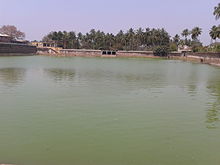
Jagannath is a deity worshipped in regional Hindu traditions in India and Bangladesh as part of a triad along with his brother Balabhadra and sister, devi Subhadra. Jagannath within Odia Hinduism is the supreme god, Purushottama, Para Brahman. To most Vaishnava Hindus, particularly the Krishnaites, Jagannath is an abstract representation of Krishna, or Vishnu, sometimes as the avatar of Krishna or Vishnu. To some Shaiva and Shakta Hindus, he is a symmetry-filled tantric form of Bhairava, a fierce manifestation of Shiva associated with annihilation.
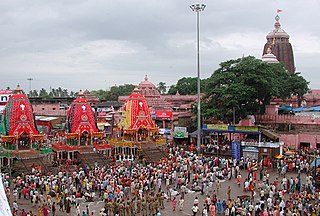
Ratha Yatra is a Hindu festival associated with Lord Jagannath held at Shri Kshetra Puri Dham in the state of Odisha, India. It is the oldest Ratha Yatra, whose descriptions can be found in Brahma Purana, Padma Purana, and Skanda Purana and Kapila Samhita. Rath Yatra or Jatra is the celebration of the Lord Jagannath, who is believed to be the Lord of Universe's journey towards his aunt's house.

Puri is a coastal city and a municipality in the state of Odisha in eastern India. It is the district headquarters of Puri district and is situated on the Bay of Bengal, 60 kilometres (37 mi) south of the state capital of Bhubaneswar. It is also known as Sri Jagannatha Dhama after the 12th-century Jagannath Temple located in the city. It is one of the original Char Dham pilgrimage sites for Hindus.
Tirtha is a Sanskrit word that means "crossing place, ford", and refers to any place, text or person that is holy. It particularly refers to pilgrimage sites and holy places in Hinduism as well as Jainism.
Prabhas Patan, also known as Somnath Patan or Prabhas Kshetra, historically named Dev Patan, is an area situated in Veraval, Gir Somnath district in Saurashtra region of Gujarat, India. Somnath temple, a place of pilgrimage due to its importance as Jyotirlinga site dedicated to Shiva, is located here.
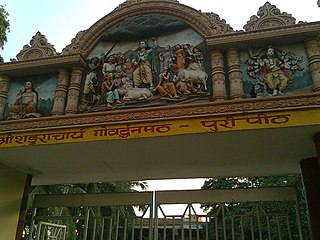
Purvamnaya Sri Govardhana Peetham or Govardhan Math is one amongst the four cardinal peethams established by the philosopher-saint Bhagwan Adi Shankaracharya to preserve and propagate Sanatana Dharma and Advaita Vedanta, the doctrine of non-dualism. Located in Puri in Odisha, India, it is the Eastern Āmnāya Pītham amongst the four Chaturamnaya Peethams, with the others being the Sringeri Śārada Pīṭhaṃ (Karnataka) in the South, Dvārakā Śāradā Pītham (Gujarat) in the West, and Badari Jyotirmaṭha Pīṭhaṃ (Uttarakhand) in the North. It is associated with the Jagannath temple. Their Vedantic mantra or Mahavakya is Prajñānam brahma and as per the tradition initiated by Adi Shankara it holds authority over Rig Veda.
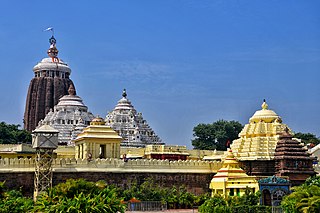
The Jagannath Temple is an important Hindu temple dedicated to Jagannath, a form of Vishnu - one of the trinity of supreme divinity in Hinduism, Puri is in the state of Odisha on the eastern coast of India. The present temple was rebuilt from the 10th century onwards, on the site of pre existing temples in the compound but not the main Jagannatha temple, and begun by Anantavarman Chodaganga, the first king of the Eastern Ganga dynasty.

Parikrama or Pradakshina is clockwise circumambulation of sacred entities, and the path along which this is performed, as practiced in the Indic religions - Hinduism, Buddhism, Sikhism and Jainism. In Buddhism, it refers only to the path along which this is performed. Typically, in Indic-religions the parikrama is done after completion of traditional worship and after paying homage to the deity. Parikrama must be done with dhyāna.

In Hinduism, the yatra (pilgrimage) to the tirthas has special significance for earning the punya needed to attain the moksha (salvation) by performing the darśana, the parikrama (circumambulation), the yajna, the Dhyana, the puja (worship), the prarthana, the dakshina, the seva, the bhandara, etc. These sacred places are usually located on the banks of sacred waters, such as sacred rivers or their tributaries, the kundas, the ghats, or the stepwells, or the temple tanks.

Yātrā, in Indian-origin religions, Hinduism, Buddhism, Jainism and Sikhism, generally means a pilgrimage to holy places such as confluences of sacred rivers, sacred mountains, places associated with Hindu epics such as the Mahabharata and Ramayana, and other sacred pilgrimage sites. Visiting a sacred place is believed by the pilgrim to purify the self and bring one closer to the divine. The journey itself is as important as the destination, and the hardships of travel serve as an act of devotion in themselves.
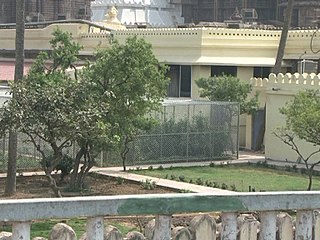
Nabakalebara also spelled as Navakalevara is the ritualistic recreation of the wooden icons of four Hindu deities at Jagannath Temple, Puri. The ritual is performed during the eighth, 12th, or 19th year after the previous Nabakalebara.

The Char Dham is a set of four pilgrimage sites in India. It is believed that visiting these sites helps achieve moksha (salvation). The four Dhams are, Badrinath, Dwarka, Puri and Rameswaram. It is believed that every Hindu should visit the Char Dhams during one's lifetime. The Char Dham as defined by Adi Shankaracharya consists of four Hindu pilgrimage sites. These main 'dhams' are the places of Lord Vishnu and Rameshwaram is of lord Shiva. All the 'dhams' are related to four epochs,(1) Dham of Satyug- Badrinath, Uttarakhand (2) Dham of Tretayug -Rameshwaram, Tamil Nadu (3) Dham of Dwaperyug - Dwarika, Gujarat (4) Dham of Kaliyug - Jaganath Puri, Odisha.

The Sapta Puri are the seven holy pilgrimage centres in India. These are the seven holy pilgrimage sites in Hinduism, which bless the pilgrims with moksha.
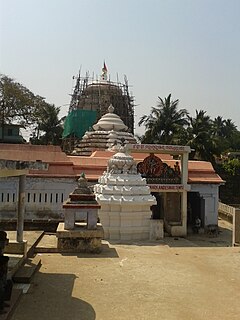
Markandeshwar Temple is a place where sage Markandeya meditated on lord Shiva. He saw a small child on a banyan leaf floating on the sea and wondered upon. Finally lord Vishnu assured him from the doubt. The ancient Markandeswar Shiva Temple is situated in the Markandeswar street by the side of the Markandeswar tank, to the north of the Jagannath temple, Puri, Odisha, India. This place can be approached on the right side of Markandeswar road leading from Markandeswar chowk to Puri-Brahmagiri road. Markandeya tank is an open structure and it enclosed within a stone wall made of dressed laterite blocks. Bathing ghats are provided for the tourists in southern side of the tank. The tank is used for rituals as well as for normal bathing. Rituals like Pinda Dana, Mundan Kriya etc. are observed on the steps of the tank. Both Markandeswar temple and Markandeswar tank can be dated back to the 12th century AD. Puri became an important center of pilgrimage by the 12th century. The history in Puri also proves that Sri Ramanuja visited Puri during 1107 and 1117.

Indradyumna, son of King Tejodeva and Queen Sunandini, was a Malava king, according to the Mahabharata and the Puranas. Noted Indologist John Dowson has opined that there have been several kings of this name and the most prominent one being the Indradyumna who ruled over Avanti region and set up the icon of Lord Jagannath in Puri.

Chari Kshetra is a group of four holy regions in Odisha. When Vishnu killed the demon Gayasura, to commemorate the glory of his victory, he placed his Sankha (conch) in Puri, Chakra (disc) in Bhubaneswar, Gadaa (mace) in Jajpur and Padma (lotus) in Konark and they were known as Sankha Kshetra, Chakra Kshetra, Gada Kshetra and Padma Kshetra respectively.

The abode of Hindu deity Jagannath at Puri is known as the Nilachala or Niladri, [Nila (Blue) + Achala (Mountain)] meaning, The Blue Mountain.
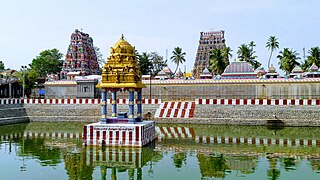
Theertham literally refers to water. In Hindu sacred literature, it is referred to as the physical holy water body associated with a temple or deity. As per Hindu religious belief, water is the principle purification mechanism. While external purification is believed to be through a dip in sacred water bodies, internal purification is through truthfulness. Most Hindu temples are associated with bodies of water, which are called Theertham. In Vishnu temples, devotees are offered a few drops of sacred water called Theertham.
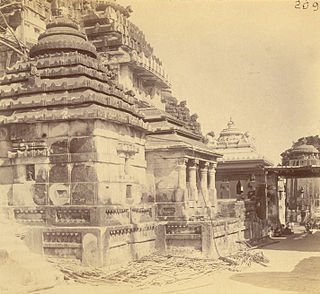
The Vimala Temple or Bimala Temple is a Hindu temple dedicated to goddess Vimala (Bimala), located within the Jagannath Temple complex in Puri in the Indian state of Odisha. It is generally regarded as a Shakti Pitha, among the holiest temples dedicated to the Hindu Goddess.
Nila Madhava is a murti that was in the possession of a tribal king, Biswabasu. Scriptures says that, after Lord Krishna wound up his manifested pastimes, he took a shape of Lord Vishnu. Biswabasu found this stone and felt its divinity. So he started worshiping it and name it Lord Nila Madhava. This brahma was later fetched by King Indradyumna by Brahmin Bidyapati for the creation of Lord Jagannath's idol. It has been kept inside a small chamber inside the Lords idol. It is believed that it is still present inside the Lord's idol and is transferred to the new idol after every 12 years.





















